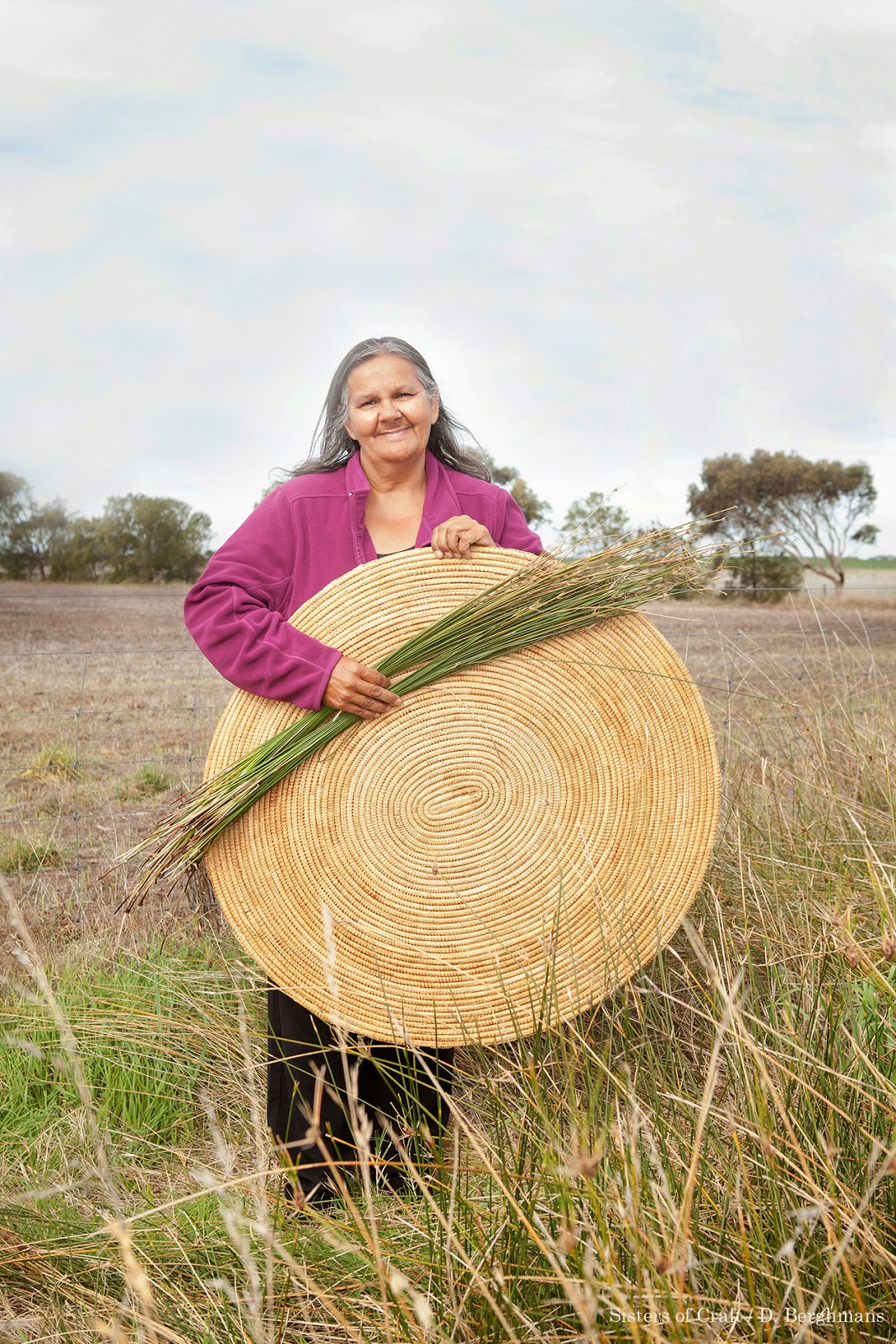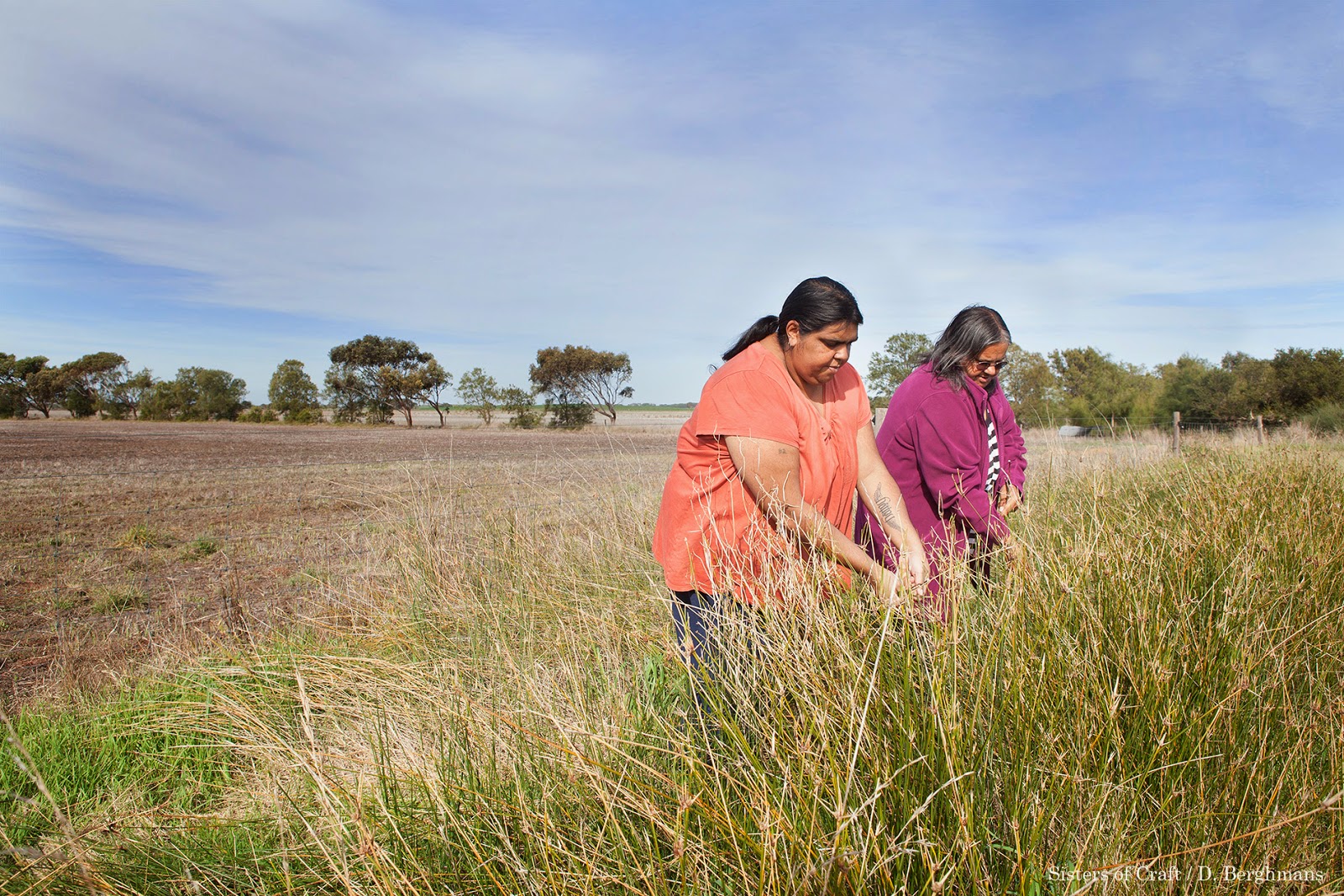After 3400 km across the Australian continent we reach Ngarrindjeri Land, a coastal community near Adelaide. Here the Ngarrindjeri people have lived along the lakes and riversides for thousands of years. The aboriginal basket weaving first started in this area and at Camp Coorong cultural traditions and ancient weaving skills are carried on.
Auntie Ellen is a passionate Ngarrindjeri weaver running the cultural museum with the help of her family. She learned how to weave 33 years ago and never stopped since. Weaving goes like a thread through the women in her family and she is now passing on the knowledge through weaving workshops.
The grass used for weaving is called rushes and grow near the seaside.
Earlier rushes could be found every where in the area, but due to cultivation of the land and severe draughts some years ago, the rushes are harder to find these days. The rushes are dried for 2-3 weeks and soaked in warm water before weaving to become flexible. The rushes remind me of the grass (säv) used for weaving in my homearea in Finland and the baskets are suprisingly similar in expression.
“Stitch by stitch, circle by circle. Weaving is like the creation of life, all things are connected" Auntie Ellen explains as she shows me how to weave. She's a patient teacher who sees teaching as her calling and as a way to keep the Ngarrindjeri culture alive. "Once people try weaving themselves, they truly appreciate the craft."
I couldn't agree more...
I find it peculiar that I had to come all the way to the other side of the world to learn a weaving technique so similar to the one done in my home area. Maybe it's sometimes necessary to go via another culture, in order to fully appreciate your own.

“When you are weaving you start small. Like your own family, as you weave out it’s like you are adding your grand children and then your relatives. The weaving binds them all together close to your heart.
Auntie Eileen McHughes / Ngarrindjeri Weaver













